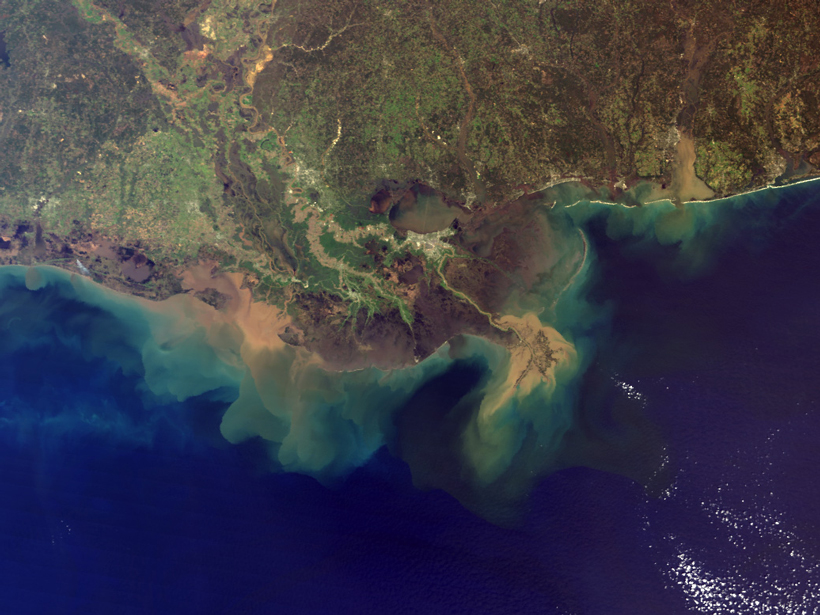Source: Global Biogeochemical Cycles
Although it is widely recognized that the world’s rivers deliver substantial amounts of dissolved nitrogen and phosphorus to coastal waters each year, the proportion of important nutrients that ultimately reach the open ocean is not presently known. Such estimates are crucial to understanding how anthropogenic activity and global climate change may affect global biogeochemical cycles.
Most current nutrient cycling models unrealistically assume that all (or none) of the rivers’ loads of dissolved nitrogen and phosphorus reach the open sea. To improve upon this all-or-nothing approach, Sharples et al. have developed a new method for estimating the proportion of nutrients that reach the open ocean following biogeochemical processing along the continental shelf.
Using a mechanistic model that uses our knowledge of how plumes of fresh river water behave after entering the sea, the team created a worldwide map of the average length of time a given nutrient lingers within shelf ecosystems. The researchers then combined these average durations with information about nutrient cycling in aquatic systems and a database of nutrient loads for more than 6000 rivers to develop geographically based estimates of nutrient delivery.
Their results suggest that 75% of nitrogen and 80% of phosphorus cross the continental shelves, delivering a total of 17 teragrams of nitrogen and 1.2 teragrams of phosphorus from rivers to the open ocean each year. These supplies, however, vary depending upon several factors, including the width of the continental shelf, each river’s nutrient load, and latitude. Latitude’s effect on nutrient export varies between 70% and 80% for nitrogen and between 70% and 90% for phosphorus.
Because these results ignore nutrient processing within estuaries, a parameter that is more difficult to estimate, these numbers should be considered upper limits, according to the team. Despite this limitation, the study is an important step forward in our understanding of the spatial variability of nutrient processing on continental shelves. This improved understanding needs to be incorporated into global geochemical models to realistically project the response of coastal and oceanic ecosystems to future warming. (Global Biogeochemical Cycles, https://doi.org/10.1002/2016GB005483, 2017)
—Terri Cook, Freelance Writer
Citation:
Cook, T. (2017), What proportion of river nutrients reaches the open sea?, Eos, 98, https://doi.org/10.1029/2017EO067741. Published on 22 February 2017.
Text © 2017. The authors. CC BY-NC-ND 3.0
Except where otherwise noted, images are subject to copyright. Any reuse without express permission from the copyright owner is prohibited.

